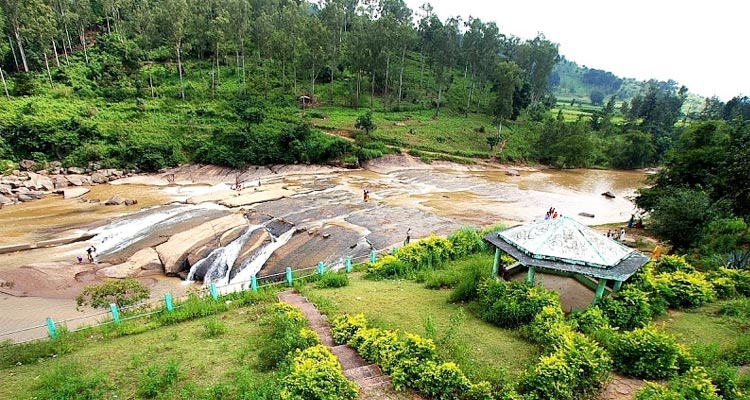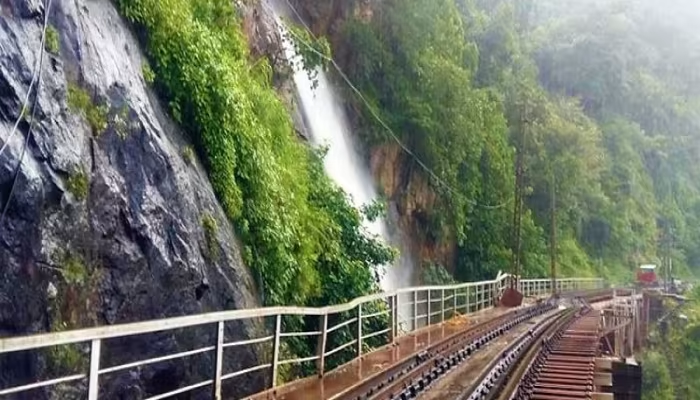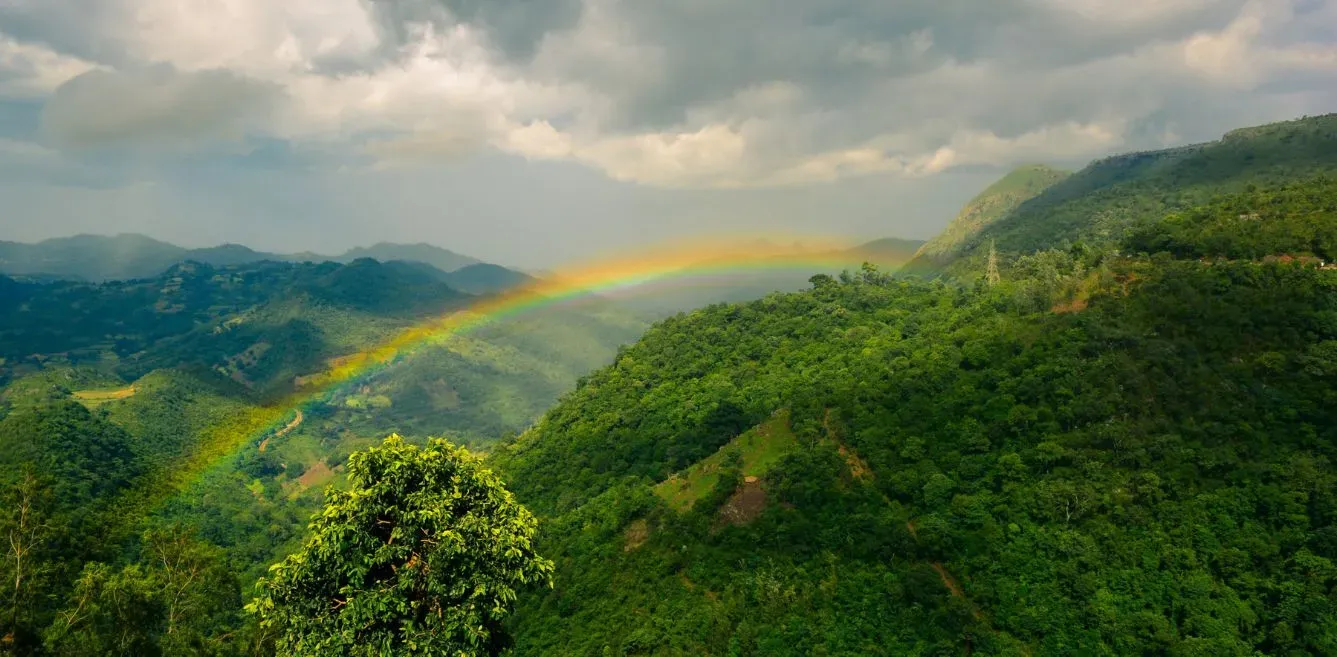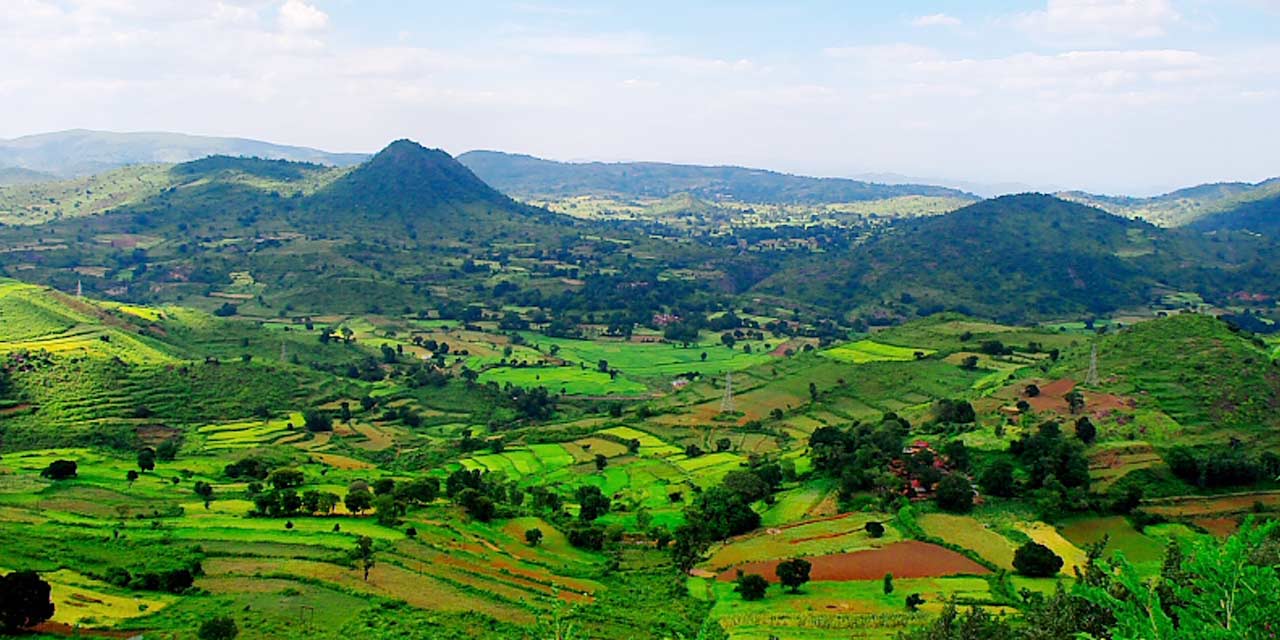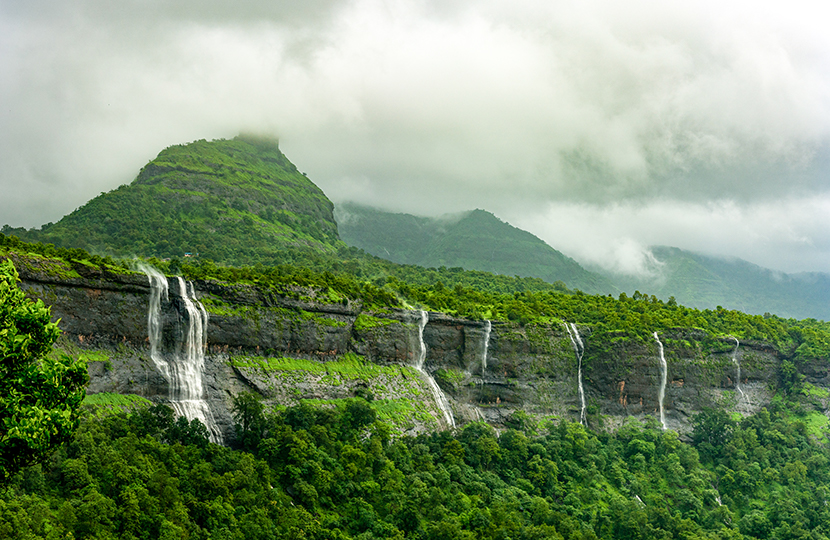Araku Valley is a Hill station in Visakhapatnam district in the state of Andhra Pradesh in India. It is a valley in the Eastern Ghats inhabited by different tribes. It is located 114 km from Visakhapatnam, close to the Odisha state border. The Anantagiri and Sunkarimetta Reserved Forest which are part of Araku Valley, are rich in biodiversity. This valley is surrounded by mountains like Galikonda, Raktakonda, Sunkarimetta and Chitamogondi. These hills are endowed with rich quality bauxite ore. Galikonda hill rising to a height of 5,000 feet (1,500 m) is one of the highest in Andhra Pradesh. The average rainfall is 1700 mm, bulk of which is received during June–October. Coffee was first introduced in Eastern Ghats of Andhra Pradesh in 1898 by Mr. Brodi, a Brtisher in Pamuleru valley in East Godavari district. Subsequently, it spread over to Pullangi (East Godavari district) and Araku Valley,Gudem of Visakhapatnam agency tracks. In 1920s even though it spread over to Ananthagiri in Araku valley and Chintapalli areas, coffee cultivation remained dormant for a long time. In 1960s, the Andhra Pradesh Forest Department developed coffee plantations in 10100 acres in Reserve Forest areas. These plantations were handed over to the A.P. Forest Development Corporation in the year 1985. In the year 1956 after the formation of Andhra Pradesh Girijan Cooperative Corporation Limited (GCC), the Coffee Board identified GCC for promoting coffee plantations. Since then, GCC started making efforts to develop coffee plantation through local tribal famers. A separate coffee wing was carved out in GCC and promoting coffee in around 4000 hectares taken up. Thus, the coffee grown in Araku valley by the tribal farmers under organic practices attained recognition as “Araku coffee”. After 1985, GCC promoted another organization by name “Girijan Coop. Plantation Development Corporation” (GCPDC) exclusively to develop coffee plantations in tribal areas. All the plantations developed by GCC and GCPDC were handed over to the tribal farmers @ 2 acres to each family. In July, 1997 the employees working in GCPDC were deployed to ITDA and coffee expansion was taken up under Five-year Plan and MGNREGS. Thus, presently the coffee cultivation reached 1 lakh acres and maintained by the tribal farmers. In India, while coffee plantations were well developed over the last century in Western ghats, expansion of coffee in Eastern ghats is still to develop. Coffee is grown under organic practices under shades of Mango, Jackfruit, Banana and silver oak trees. Around 1 lakh tribal families living in this region are getting financially stabilized through coffee cultivation. The more welcoming development is that the tribal famers have given up their traditional “Podu” cultivation and now switched over to coffee cultivation on a large scale. The coffee cultivated in this region at an altitude of 900 to 1100 m MSL is having unique qualities due to medium acidity in soil. During the year 2015-16 GCC collected 1400 M.Ts of coffee, marketed the same through E-Auction Process. The valley is connected through both rail and road to the city of Visakhapatnam. There are two railway stations at Araku on the Kothavalasa-Kirandul railway line of Visakhapatnam division of the East Coast Railway, on the Indian Railways network. Shimiliguda railway station is located at an altitude of 996 meters above mean sea level. Araku is one of the most visited tourist destinations in Andhra Pradesh. September to October and March to May are the best seasons to visit Araku Valley.
Gallery
